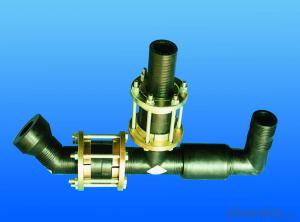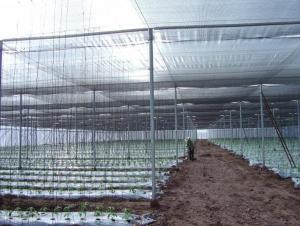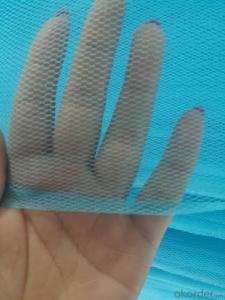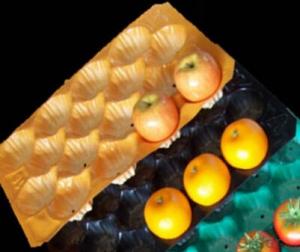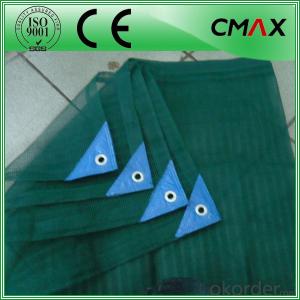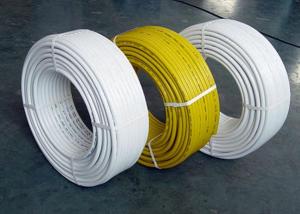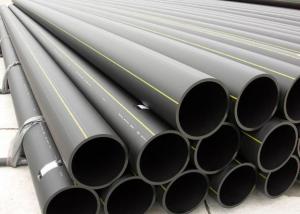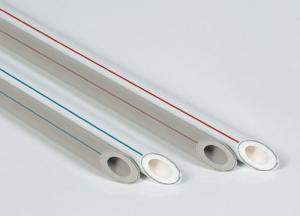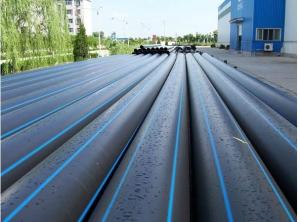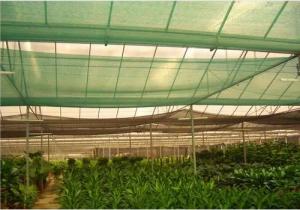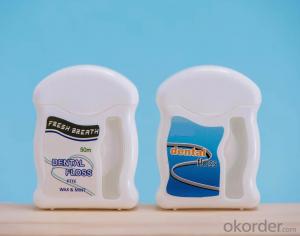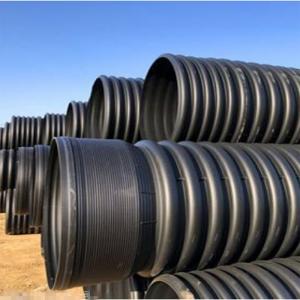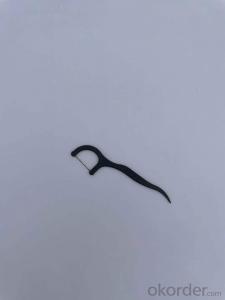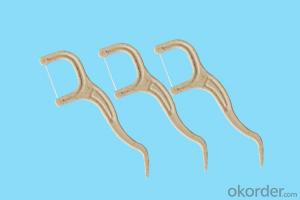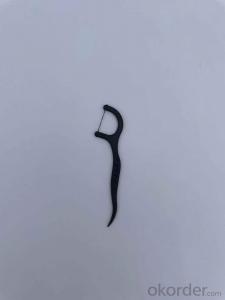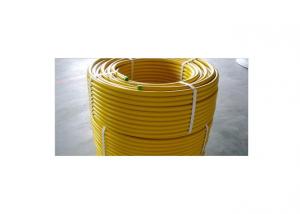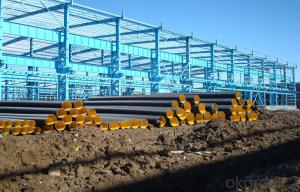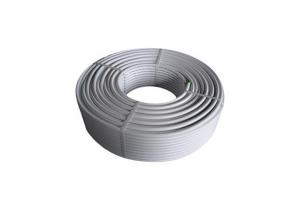pipe fittings for steel mesh reinforced PE pipe
OKorder Service Pledge
OKorder Financial Service
You Might Also Like
There is steel platereinforced structure inside the pipe fitting, and the steel plate is surroundedby the HDPE the structure is very solid and also obtains excellent anti-corrosionand abrasion resistant feature, it can guaranty the steady and life span of thewhole piping system.
The Steel Reinforced PE fittings is a combination of a steel sheet which works as the reinforcing part and HDPE which works as the stuffing material injected on both surfaces of the steel sheet.
The end of Steel Reinforced PE pipe will be constructed differently for different connections.
1) At a flange connection end, there is a flange head for the connection. You need flange connection kits, which is ordered separately.
2) In an electro-fusion end, the outside surface is pre-treated for a proper electro-fusion. You need a electro-fusion Coupler, which is ordered separately. Electro-fusion connection can only be done by using the Huachuang brand Electro-fusion Bar-code Scanning Welding Machine.
So, there are three kinds of fitting connection options for each pipeline:
•DD Option: Both ends are Electro-fusion connection ends
•FF Option: Both ends are Flange connection ends
•DF Option: One end is an Electro-fusion connection end and another end is a Flange connection end.
- Q:GB aluminum alloy lined plastic composite pipe wall thickness
- The current standard [Aluminum Alloy plastic composite pipe and pipe fittings] is in accordance with the Kaiser ASAK-Pipe_2010 space tube drafting, the preparation of the People's Republic of China urban construction industry standards CJ/321-2010 [Aluminum Alloy plastic composite pipe and pipe fittings]. It was promulgated and implemented by the Ministry of construction on June 1, 2010,
- Q:How do composite pipes handle seismic movements?
- Composite pipes are designed to handle seismic movements by being flexible and resilient. The materials used in composite pipes, such as fiberglass or carbon fiber, have high tensile strength and are able to withstand the stresses caused by seismic activity. Additionally, composite pipes are often installed with expansion joints or other flexible connections that allow for movement without compromising the integrity of the pipe system. This flexibility helps to absorb and distribute the forces generated by seismic movements, reducing the risk of pipe damage or failure.
- Q:Are composite pipes compatible with different pipe fittings?
- Yes, composite pipes are compatible with different pipe fittings. Composite pipes have the versatility to connect with various types of pipe fittings, including metal, PVC, or other composite fittings, allowing for easy installation and integration with existing plumbing systems.
- Q:How do composite pipes compare to traditional metal pipes?
- Composite pipes are generally lighter, more durable, and resistant to corrosion compared to traditional metal pipes. They also have better insulation properties, reducing heat loss and condensation. Additionally, composite pipes offer easier installation, lower maintenance requirements, and are more cost-effective in the long run. However, traditional metal pipes may still be preferred in certain applications where high pressure and extreme temperatures are involved.
- Q:How do composite pipes perform in high-humidity environments?
- Composite pipes perform well in high-humidity environments. The materials used in their construction, such as reinforced plastics or fiberglass, are resistant to moisture and do not corrode like traditional metal pipes. This ensures their durability and long lifespan, making them an ideal choice for use in high-humidity areas.
- Q:Can composite pipes be used for district heating and cooling systems?
- Yes, composite pipes can be used for district heating and cooling systems. Composite pipes offer numerous advantages such as high strength, corrosion resistance, and thermal insulation properties, making them suitable for efficient and reliable distribution of hot and cold fluids in district heating and cooling systems.
- Q:Are composite pipes suitable for chemical storage tanks?
- Yes, composite pipes are suitable for chemical storage tanks. Composite pipes are made of materials that are highly resistant to corrosion, chemicals, and other harsh substances. They offer excellent strength, durability, and dimensional stability, making them a reliable choice for storing chemicals safely and efficiently. Additionally, composite pipes are lightweight, easy to install, and have a long lifespan, making them a cost-effective solution for chemical storage tanks.
- Q:Can composite pipes be used for hot water distribution?
- Yes, composite pipes can be used for hot water distribution.
- Q:Can composite pipes be easily installed?
- Yes, composite pipes can be easily installed due to their lightweight nature and flexibility. They can be easily maneuvered and connected using standard fittings, making the installation process efficient and hassle-free. Additionally, composite pipes require minimal maintenance, making them a convenient choice for various applications.
- Q:Do composite pipes require insulation?
- Yes, composite pipes often require insulation to prevent heat transfer, condensation, and maintain the desired temperature of the fluid being transported.
1. Manufacturer Overview |
|
|---|---|
| Location | |
| Year Established | |
| Annual Output Value | |
| Main Markets | |
| Company Certifications | |
2. Manufacturer Certificates |
|
|---|---|
| a) Certification Name | |
| Range | |
| Reference | |
| Validity Period | |
3. Manufacturer Capability |
|
|---|---|
| a)Trade Capacity | |
| Nearest Port | |
| Export Percentage | |
| No.of Employees in Trade Department | |
| Language Spoken: | |
| b)Factory Information | |
| Factory Size: | |
| No. of Production Lines | |
| Contract Manufacturing | |
| Product Price Range | |
Send your message to us
pipe fittings for steel mesh reinforced PE pipe
OKorder Service Pledge
OKorder Financial Service
Similar products
New products
Hot products
